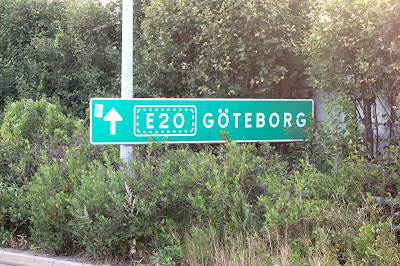After a Friday morning of window shopping in Oslo, we left for a weekend with friends.
We traveled through the rural countryside of Sweden
to Gothenburg by motor coach! It was the nicest way to travel: clean, air conditioned, and not crowded.
The purpose of this excursion from the tourist hotspots was to visit friends we got to know over thirty years ago at Crossworld headquarters in Philadelphia. John and Kris Voss had children near our children's ages, so as the kids played, we bonded. The Vosses have lived in Sweden since then, and we have kept our friendship through correspondence and sporadic visits.
When they first went to Sweden, John worked at a counseling service housed in this lovely compound.
On Saturday morning, Kris fixed a lovely Swedish coffee for the ladies in her church.
Kris' friends were thrilled to see her happily resettled in her rebuilt home, and they graciously listened to a talk I had prepared from the book of Ruth on "How to Get Along with the Women in Your Life".
Since Kris' daughter, Tina, their son-in-law and adorable grandson live in Gothenburg, we were able to get acquainted with them.
Their youngest son, Lars, was visiting from Chicago to be a groomsman in a friend's wedding.
So, in the afternoon we were able to witness a Swedish wedding in an historic state church.
Our friends explained the Swedish custom of a couple exiting their wedding in a humorous, BIG way.
Bill and I were a bit more sedate.
On Sunday morning, we attended church with the Vosses; it was John's turn to preach.
After a lovely family dinner,
we bid our farewells. What a special weekend, not seeing sights, but seeing friends!





























































